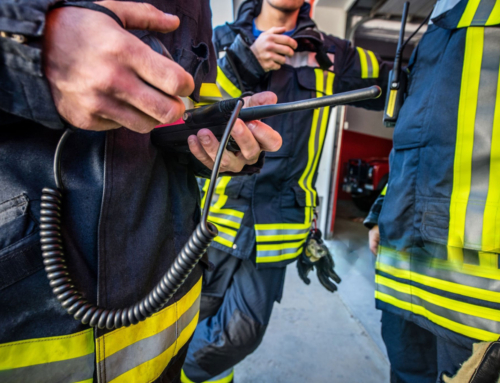Ever had that moment where your phone bars drop the minute you step into a building, no matter how much you wiggle it around or hold it over your head? Annoying, right? You suddenly realize you can’t send a text, post that perfect photo to social media, or even browse the web. This is where a Cellular Distributed Antenna System (DAS) comes in. In simplest terms, a Cellular DAS is a network of antennas placed strategically within a building or area to boost or even create cellular signals. Think of it as the secret sauce behind strong, consistent cellular coverage inside large buildings or dense environments.
A cellular DAS is a bit like setting up a mini-cell network indoors. It consists of three main components:
- Signal Source: This brings in cellular signal from a carrier, typically via a small cell, repeater, or Bi-Directional Amplifier (BDA). The BDA captures outdoor cellular signals and amplifies them indoors, making it another essential option for extending coverage when carrier-provided solutions aren’t feasible.
- Distribution System: This uses coaxial cables or fiber optics to route the signal throughout the building.
- Antennas: Small, discreet antennas installed in multiple locations to distribute the cellular signal evenly.
A critical component of many DAS deployments today is what is called Neutral Host Architecture. A neutral host DAS allows multiple wireless service providers (like AT&T, Verizon, and T-Mobile) to share the same infrastructure. This is particularly beneficial because it eliminates the need for separate systems for each carrier. Not only is it the preferred setup by wireless providers, but it’s also more cost-efficient for building owners. By deploying a single DAS that supports all major carriers, you save on both installation and maintenance while delivering seamless connectivity to everyone inside.
These components and strategies work together to ensure smooth, consistent cellular service across your entire space, whether it’s a skyscraper, hospital, hotel, stadium, university campus, or sprawling airport.
The Importance of Great Design in Cellular DAS Solutions
Designing a cellular DAS solution starts with sophisticated software like iBwave, which is critical for creating accurate and efficient designs. iBwave allows engineers to simulate coverage, model the building’s unique characteristics, and determine the optimal placement of antennas and equipment. A well-executed design is key to ensuring consistent signal strength, minimizing interference, and reducing installation costs. The precision of a great design directly impacts the system’s performance, making it essential for delivering seamless, reliable coverage throughout the entire building.
Testing Methods to Ensure Optimal DAS Performance
Once a cellular DAS is installed, several testing methods are employed to ensure the system is working at its best. Key tests include:
- PIM Testing (Passive Intermodulation): This checks for interference caused by faulty components or installation issues, which can degrade signal quality.
- CW Testing (Continuous Wave): This involves transmitting a test signal to measure signal propagation and verify coverage.
- Sweep Testing: This ensures that cables and components are properly functioning by analyzing signal frequency and identifying any loss or irregularities.
These tests are crucial for optimizing performance and ensuring that the DAS meets design expectations and carrier standards.
The Expanding Impact of 5G and Cellular DAS
As 5G continues to expand nationwide, it’s important to understand how wireless service providers operate across various frequency spectrums, from low-band to high-band (mmWave). Higher frequencies like mmWave offer incredible speeds but have shorter ranges and struggle with obstacles like walls. To address this, 5G requires a higher density of antennas in a DAS system for effective indoor coverage. Looking ahead, the role of DAS will grow even further, integrating more seamlessly with next-gen networks like private 5G and eventually 6G, along with advancements in automation and AI. As demands for faster speeds and low-latency applications rise, DAS will be crucial in providing reliable connectivity in increasingly complex environments.
Layering Private 5G Over a DAS – The Next Big Thing?
Private 5G is a game-changer for businesses looking for more control and security over their communications networks. Imagine running your own 5G network within your building, separate from public carrier networks. With a cellular DAS, you can layer private 5G over your existing infrastructure. This allows for customized, secure networks ideal for enterprise operations, warehouses, or any environment needing high-speed, low-latency communications. Businesses get the best of both worlds – public cellular access for visitors and employees, plus a dedicated private 5G network for mission-critical operations.
What is MOCN and How Does it Relate to Cellular DAS?
MOCN stands for Multi-Operator Core Network, and it’s a pretty clever solution in the world of cellular coverage. With MOCN, multiple wireless carriers share the same radio access network while maintaining their own core networks. This setup allows carriers to share infrastructure like antennas and base stations, which ties directly into how a cellular DAS operates. In a DAS with MOCN, a single system can support multiple carriers simultaneously, making it more efficient and cost-effective while ensuring robust coverage for everyone in the building.
This approach is especially beneficial in environments where multiple carriers need to deliver service but want to avoid the complexity and cost of deploying separate systems. MOCN, when combined with a neutral host DAS, provides a seamless solution for offering multi-carrier coverage while simplifying deployment and management. As 5G and private networks continue to grow, MOCN in a DAS setup will likely play a big role in meeting connectivity demands efficiently.
Looking Ahead to 6G (Yes, it’s Coming)
While 5G is still expanding, researchers are already working on what 6G might look like. 6G is expected to offer even faster speeds, advanced AI integration, and ultra-low latency, all of which could revolutionize industries like IoT and automation. As these technologies develop, we’ll likely see DAS evolving alongside them, ensuring that buildings stay connected, whether through public or private networks.
How Wi-Fi and Cellular DAS Solutions Can Coexist
While Wi-Fi and cellular DAS solutions serve different purposes, they complement each other to create a seamless and robust communication network. Wi-Fi is great for high-bandwidth tasks like internet browsing, internal communications, and supporting IoT devices. On the other hand, a cellular DAS ensures reliable voice, messaging, and data coverage, especially in areas where cellular signals struggle. By deploying both, you get the best of both worlds – high-speed wireless access and uninterrupted cellular connectivity, making your building more adaptable and future-ready.
It’s crucial to plan both Wi-Fi and cellular infrastructure early in the design phase of a new building. Properly designing Wi-Fi infrastructure involves strategically placing access points for optimal coverage, similar to planning cellular DAS antenna locations. As of today, Wi-Fi antennas are separate from cellular antennas, requiring thoughtful integration to avoid signal interference and ensure consistent performance across both networks.
Why Invest in a Cellular DAS?
As we continue our journey into a more connected, mobile-first world, having reliable cellular coverage isn’t just a perk – it’s essential. Whether it’s for keeping tenants happy, ensuring employees can stay connected, or supporting new tech like IoT, a cellular DAS is a forward-thinking investment.
Additionally, cellular DAS is increasingly being recognized as a critical utility for buildings, much like electricity or water. Just as tenants and visitors expect running water and power, they now expect strong, reliable cellular coverage. Installing a DAS adds significant value to your property, making it more attractive to tenants, enhancing property marketability, and ensuring your building is future-proofed for new technologies like 5G, private networks, and eventually 6G.
RSS: Leading the Way in Nationwide Cellular DAS Solutions
At RSS, we stand at the forefront of designing, installing, and commissioning state-of-the-art cellular DAS solutions for both indoor and outdoor environments, anywhere in the country. Our expertise covers every stage of the process, from planning and design to seamless integration and deployment. Whether it’s a skyscraper in a dense urban area or a sprawling outdoor venue, RSS delivers customized, carrier-grade and carrier-approved solutions that ensure your building or facility remains connected, future-proofed, and ready for the next generation of wireless technologies. Click here to schedule a consultation with one of our team members.






